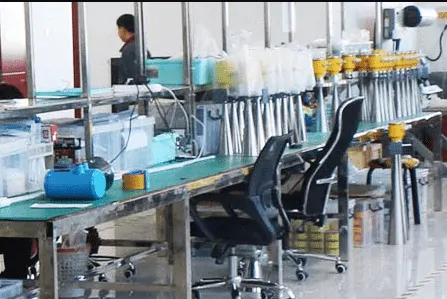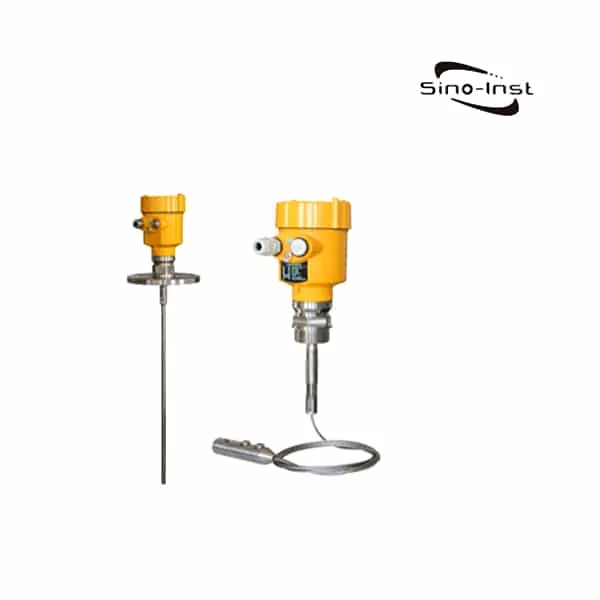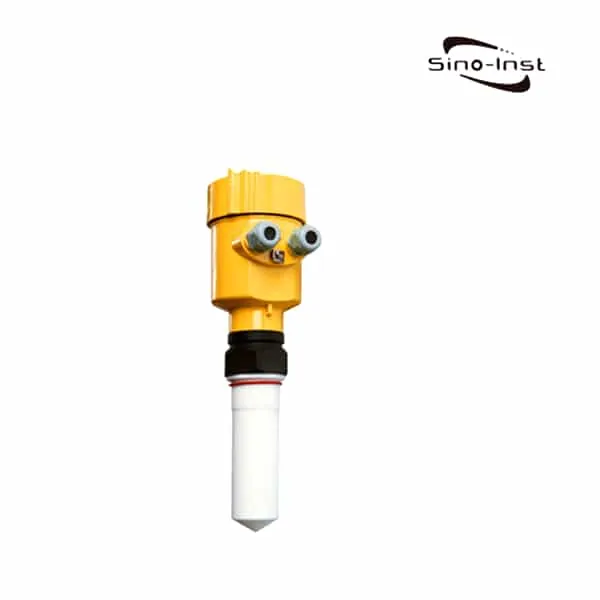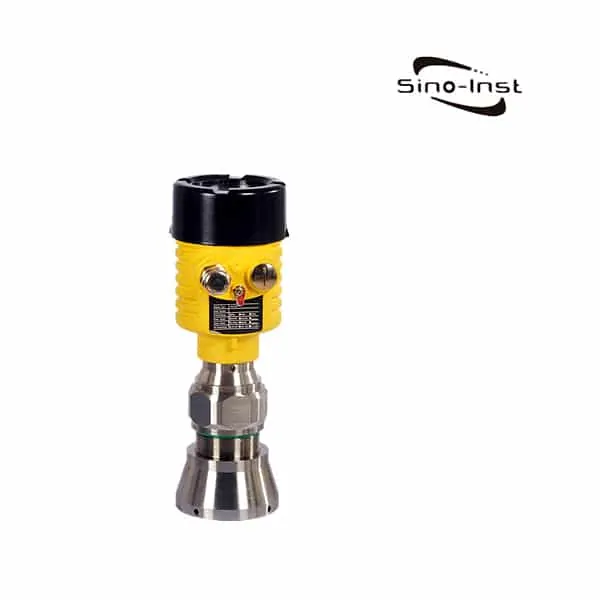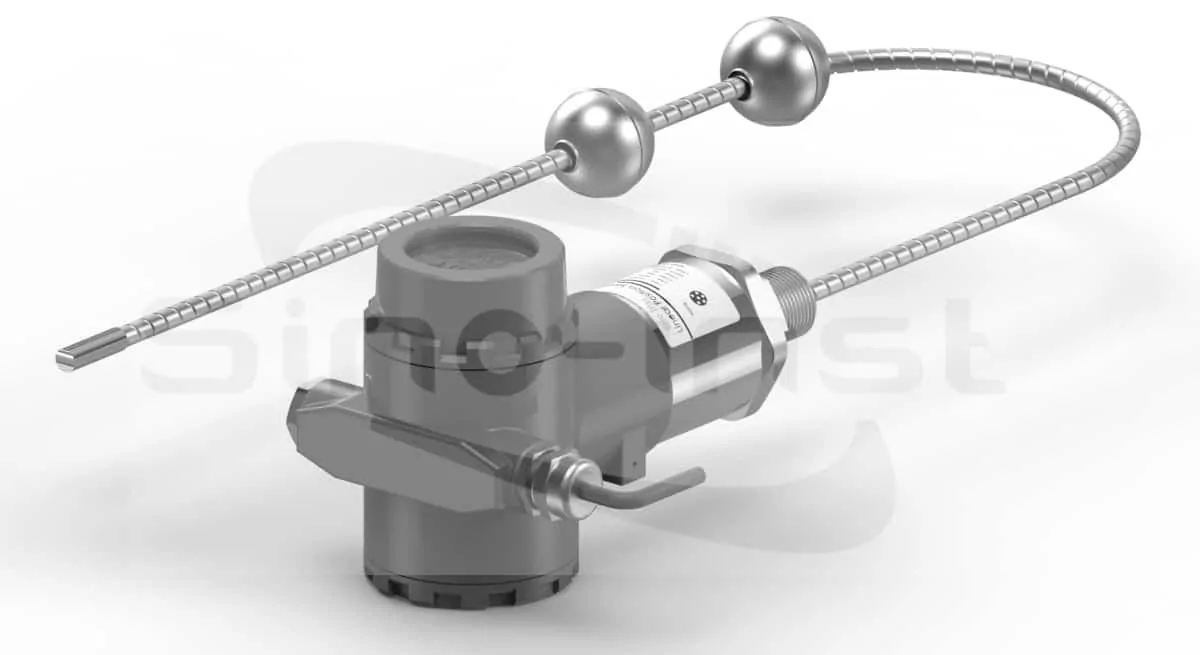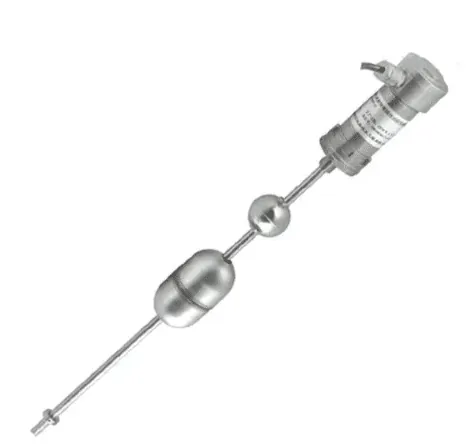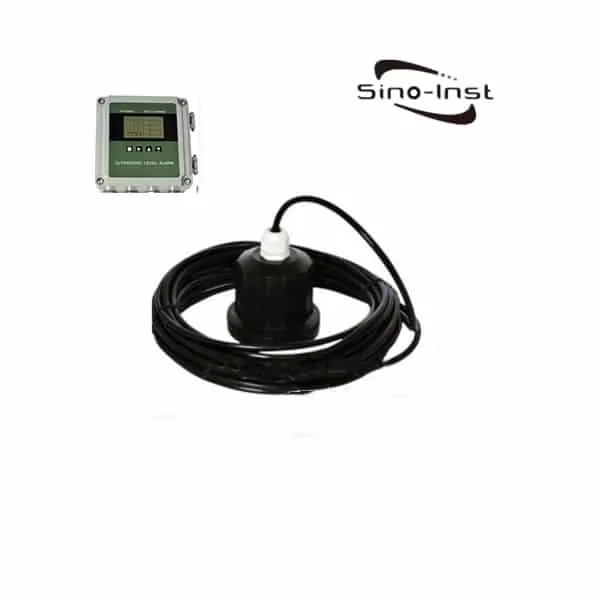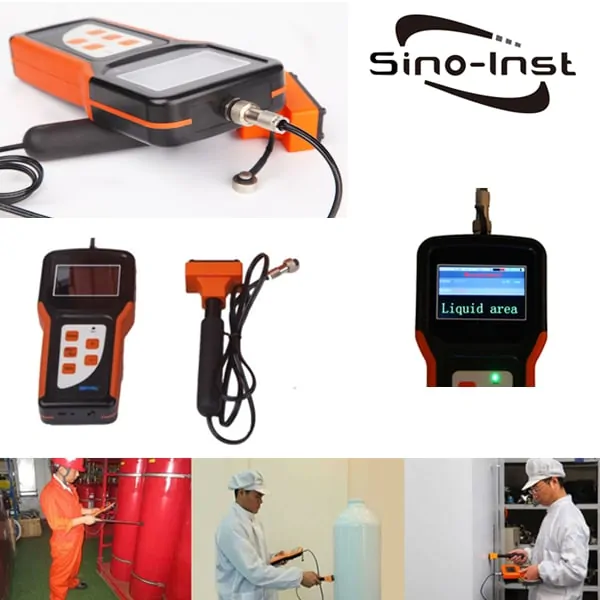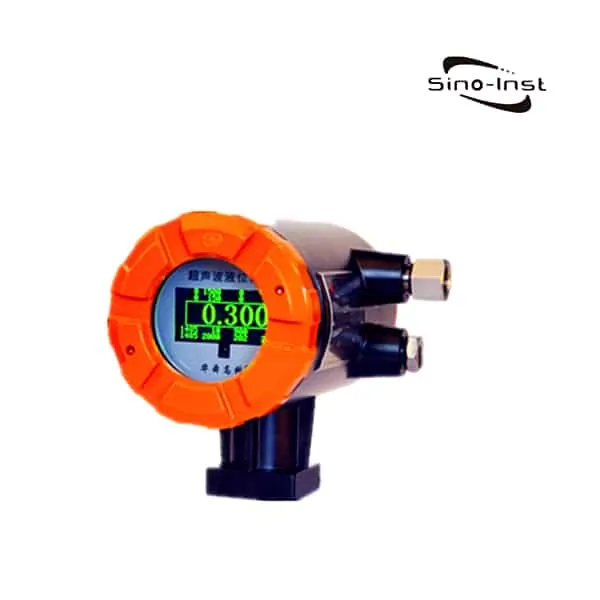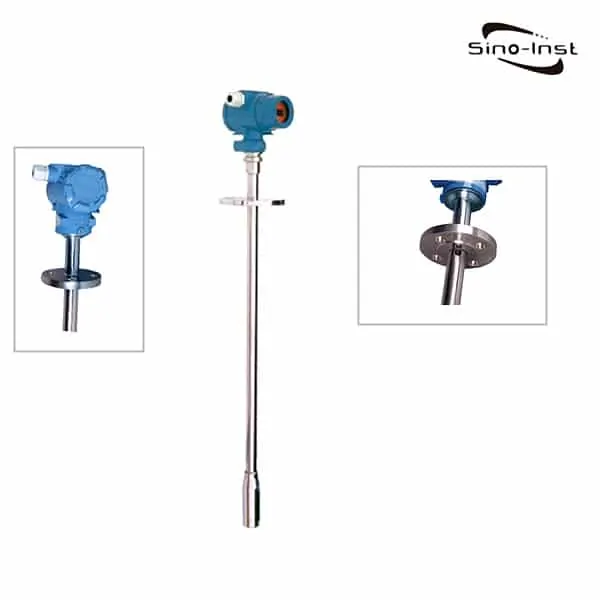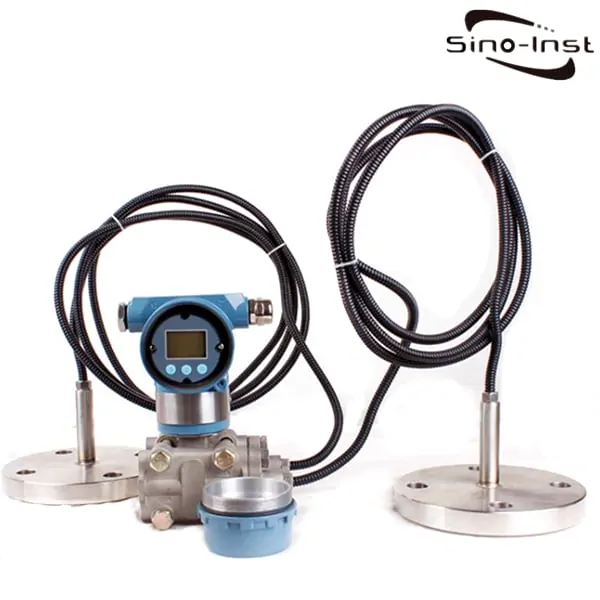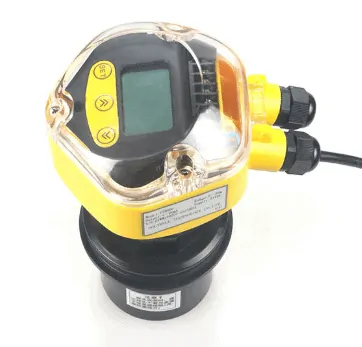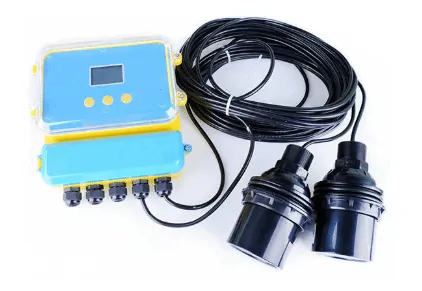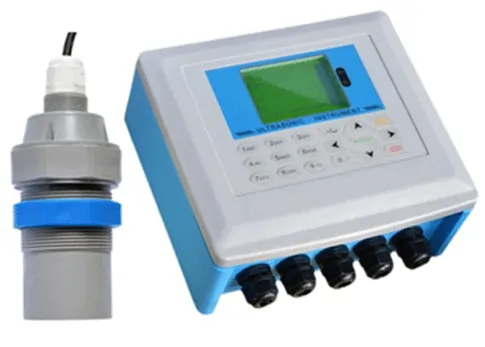The working frequency band of Radar Tank Level Sensor is 24G~26GHZ. Radar Tank Level Sensor is a non-contact radar transmitter based on the principle of FM continuous wave.
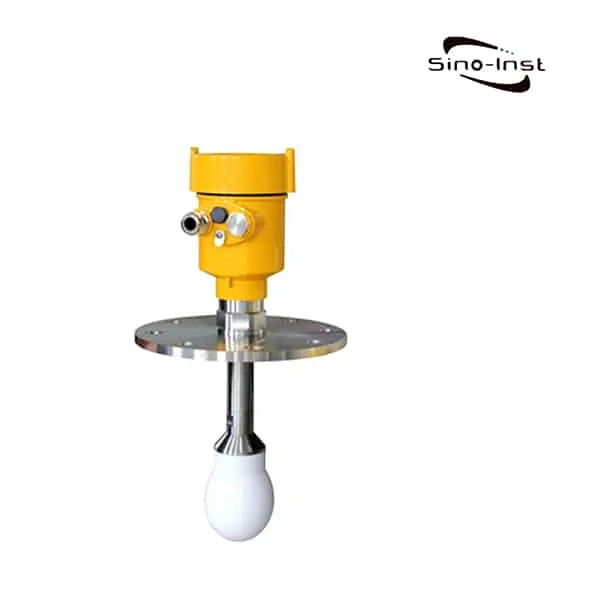
SIRD-902 Drop antenna Radar Tank Level Sensor is an integral PTFE drop antenna type radar level sensor. It is used to measure the distance and level of strongly corrosive liquids, pastes and solid media. Compared with the radar level sensor that adopts the pulse measurement principle, it can measure stably, reliably and with high precision even in dusty, foamy, and highly corrosive applications. Compared with pulse radar or GWR, there are many features they don’t have.
Sino-Inst offers a variety of Radar Level Sensors for industrial level measurement. If you have any questions, please contact our sales engineers.
Features of SIRD-902 Drop Antenna Radar Tank Level Sensor
- Non-contact measurement;
- 4-20mA standard output;
- HART bus communication;
- K band, high precision, high reliability;
- Solve the measurement problems of liquid, slurry, paste and other stirring, foam or liquid level fluctuation and violent stirring;
- The drop-type antenna can be used in harsh working conditions such as severe condensation or strong corrosive media.
Specifications of SIRD-902 Drop Antenna Radar Tank Level Sensor
| Application: | Temperature, pressure, slightly corrosive liquid; Storage container, process container or agitating occasion with severe fluctuation; occasions with severe condensation or strong corrosive medium |
| Measuring Range: | 30 meters |
| Process Connection: | Thread, flange |
| Process Temperature: | -40~130℃(standard type) / -40~250℃(high-temperature type) |
| Process Pressure: | -0.1~4.0MPa |
| Accuracy: | ±3mm |
| Protection Grade: | IP67 |
| Frequency Range: | 26GHz |
| Supply: | Two-wire system (DC24V) / Four-wire system (DC24V/AC220V) |
| Signal Output: | Exia ⅡC T6 Ga / Exd IIC T6 Gb |
| Outer Covering: | Aluminum Single Chamber / Aluminum Dual Chamber / Plastic / Stainless Steel Single Chamber |
| Explosion-proof Grade: | 4…20mA/HART (two-wire/four-wire) / RS485 Mod bus |
| Antenna Material | Stainless Steel / PTFE |
Radar Level Sensor Application
SIRD-902 Drop Antenna Radar Tank Level Sensor is equipped with a drop antenna.
The water drop antenna is also called a spherical antenna.
This antenna has strong signal processing capabilities. Not only can measure liquid media. It can also measure slurry media. It is used to measure the distance and level of strongly corrosive liquids, pastes and solid media.
Others Radar Level Sensor Applications
- The steel industry
Production processes:
Coal coking: coal storage bins, coking bins, gas tanks, coal tar and crude benzene tanks
Sintering plant: sintering material mixing silo, cold return ore, pellet silo
Ironworks: intermediate warehouse for ironmaking, blast furnace material level, etc.
Working condition characteristics:
Solid material measurement, strong dust, low dielectric constant, long range.
Volatile crystals of tar and crude benzene
High temperature and dust adhesion of blast furnace material level
Selection application:
The solid measurement is mainly based on high-frequency pulse radar level meter.
Guided wave radar level gauges can be used for crude benzene and coal tar.
- Coal industry
Production processes:
Raw coal bunker, pulverized coal bunker, coal gangue storage material level, coal washing pool.
Working condition characteristics:
Typical solid material measurement, strong dust, low dielectric constant, long range.
Selection and application:
The high-frequency pulse radar level meter is mainly used.
- Cement industry Production processes:
Raw material warehouse, raw meal homogenization warehouse, clinker warehouse, finished product warehouse, fly ash warehouse, raw coal warehouse, gypsum warehouse, cement slag warehouse Working condition characteristics:
Typical solid material measurement, strong dust, low dielectric constant, long range. Selection application:
The high-frequency pulse radar level meter is mainly used. - Power industry Thermal power, hydropower, and biological power generation
Production processes:
(Thermal power) raw coal and pulverized coal silo, circulating pool, low-elevation water level, limestone powder silo, ash hopper level, ash silo, slag silo, desulfurization tower liquid level
Working condition characteristics:
Solid material measurement, strong dust, low dielectric constant, long range.
Low water level. High temperature and high pressure;
Desulfurization tower liquid level foam, water vapor, crystallization, spray interference, side installation
Selection application:
The measurement of solid materials is based on high-frequency pulse radar level meters.
Guided wave radar for high and low water level applications;
Low-frequency radar level meters are commonly used for liquid level in desulfurization towers.
- Non-ferrous metallurgy industry: aluminum, nickel, zinc, and titanium industries
Production processes:
(Aluminum) slurry tank, dissolution tank, flash tank, post-dissolution tank, flocculation tank, settling tank, decomposition tank, alumina powder silo
Working condition characteristics:
Various chemical reaction environments have high temperature, strong water vapor, stirring or corrosion factors
Selection application:
In view of the influence of high-temperature water vapor, refer to factors such as corrosion, range, stirring, hanging material, etc.
Choose guided wave radar or low-frequency radar level meter.
High-frequency radar level meters are still preferred for solid measurement.
- Water conservancy industry
Application range:
Hydrological monitoring, flood control alarm, farmland irrigation
Working condition characteristics:
The signal transmission is far, the power supply voltage is low, and the installation location is affected by the river embankment and dam. The radar wave with a small beam angle is preferred
Selection application:
Choose high frequency radar level meter with MODBUS protocol
- Food and medicine industry
Production processes:
Edible oil tank, soybean meal storage tank
Working condition characteristics:
The tank environment is simple, or has accuracy requirements, and antenna hygiene requirements in the pharmaceutical and food industries
Selection application:
A high-precision measurement environment gives priority to high-frequency radar level meter
If there are sanitary requirements, an antenna with a sealed material that meets sanitary conditions should be selected
- Industrial petrochemical industry, coal chemical industry
Production processes:
Petrochemical industry: crude oil storage, gasoline tank, diesel tank, natural gas tank, etc.
Coal coke chemical industry: refer to the coal industry
Calcium carbide chemical industry: coal bunker, calcium carbide bunker, etc.
Working condition characteristics:
Solid material measurement, strong dust, low dielectric constant, long-range.
The measurement environment of various oil depots is simple, and accuracy requirements may be required
There is pressure in the natural gas spherical tank, and the dielectric constant is small
Oscillation interference echo exists in gas tank level measurement
Various chemical reactor conditions are different
Selection application:
The measurement of solid materials is based on high-frequency pulse radar level meters.
For various oil depots with precision requirements, high frequency radar is preferred for spherical tanks
Gas tanks that are prone to oscillating interference signals also have a limited choice of high-frequency radars
Selection of chemical reactor according to actual conditions and parameters
- Environmental protection and water treatment industry
Processing link:
Collection wells, coarse grids, fine grids, biochemical reaction tanks, mud flushing tanks, sludge tanks, well-dissolved medicine tanks
Working condition characteristics:
Except for the ultra-long range and narrow space such as collection wells, other environments are relatively simple
Selection application:
Guided wave radar or high-frequency radar level meter can be selected for collecting wells according to the range requirements. Generally, ultrasonic level meters are more commonly used in simple environments.
- Semiconductor industry
Production link: Silica powder warehouse
Working condition characteristics: very low dielectric constant, strong dust
Selection application: high frequency radar level meter
Extended reading: FMCW Radar Level Transmitter 120GHz
Radar Antenna Types

- Horn antenna for radar level gauge:
26G high-frequency radar-type level measuring instrument. Output 4-20mA analog signal. The maximum measuring distance can reach 70 meters. This antenna has been further optimized. The new and fast microprocessor can perform higher-speed signal analysis and processing. The instrument can be used for particularly complex measurement conditions in reactors or solid silos. - Rod antenna for radar level gauge:
Suitable for measuring liquids. Corrosive media. The maximum measuring distance can reach 20 meters. The antenna is further optimized. The new and fast microprocessor can perform higher rate signal analysis and processing. The instrument can be used for very complex measurement conditions in the reactor or solid silo. - Parabolic antenna for radar level gauge:
This is a new type of antenna launched in China. It is mostly used in high-frequency transmitting radars. It is especially suitable for measuring targets and avoiding obstacles. 26G high frequency radar type level measuring instrument. Output 4~20mA analog signal. The maximum measuring distance can reach 70 meters. The antenna is further optimized. The new and fast microprocessor can perform higher rate signal analysis and processing. The instrument can be used for very complex measurement conditions in the reactor or solid silo. - Radar level gauge casing antenna:
The casing has a focusing effect on radar waves. Therefore, when the dielectric constant is small or the liquid level produces continuous eddy currents or the device in the container causes false reflections, this type of instrument is suitable. But the measured medium is required to have good fluidity. It is not easy to hang the material. - Lens radar liquid level antenna:
Transmits narrow microwave pulses and transmits downward through the antenna. The maximum measuring distance can reach 70 meters. The antenna is further optimized. The new and fast microprocessor can carry out higher-speed signal analysis and processing. The instrument can be used for some complex measurement conditions such as reactors and solid silos.
The above content is for your reference only. When choosing the antenna of the radar level gauge, you should choose according to the actual needs of the measurement environment.
Extended reading: Magnetostrictive Hydraulic Cylinder Position Sensor
Radar Tank Level Sensor Working Principle
Frequency Modulated Continuous Wave Technology (FMCW)
The drop-type antenna emits radar waves, which are received by the antenna after being reflected on the surface of the medium. The radar principle used is Frequency Modulated Continuous Wave (FMCW). The frequency modulated continuous wave (FMCW) radar sends out a signal in the high-frequency band. Within its measurement range, the frequency of the radar wave increases linearly (called frequency sweep).
The transmission and reception of radar waves correspond to a time difference t. The distance d between the radar and the surface of the medium conforms to the formula t=2×d/c. Where c is the transmission speed of the radar wave above the surface of the medium, that is, the speed of light.
SIRD-902 Drop Antenna Radar Tank Level Sensor performs signal processing by comparing the frequency difference between the reflected wave and the current transmitted wave. The frequency difference △f is proportional to the distance, and the greater the frequency difference, the greater the distance.
After Fast Fourier Transform (FFT), the frequency difference Δf is converted into a frequency spectrum, and the distance d is calculated from this. The height of the level is calculated by the given tank height.
Extended reading: Radar Level Meter for Corrosive Liquids
More Featured Radar Level Sensors
Level Senors for Tank Level Measurement
Tank level senor is a level sensor used to measure the tank level. The liquid level is the level of the liquid in a sealed container (such as a water tank) or an open container (water tank). The instrument that measures the liquid level is called a liquid level sensor, a liquid level gauge or a liquid level transmitter. The liquid level sensor is a kind of level instrument.
Hydrostatic, Ultrasonic, Magnetostrictive, Radar, Differential Pressure are commonly choices for tank level measurement. Liquid level sensors have been around for decades for leak detection or level measurement. Common measured mediums are: Water, Fuel, Diesel, Gasoline, diesel, liquefied gas, liquid ammonia, etc.
Read more about: 7 Level Senors for Tank Level Measurement
FAQ
Sino-Inst offers over 10 Radar Tank Level Sensors for level measurement. About 50% of these are Radar level meters, 40% is the tank level sensor.
A wide variety of Radar Tank Level Sensors options are available to you, such as free samples, paid samples.
Sino-Inst is a globally recognized supplier and manufacturer of radar level measurement instrumentation, located in China.
Request a Quote

Wu Peng, born in 1980, is a highly respected and accomplished male engineer with extensive experience in the field of automation. With over 20 years of industry experience, Wu has made significant contributions to both academia and engineering projects.
Throughout his career, Wu Peng has participated in numerous national and international engineering projects. Some of his most notable projects include the development of an intelligent control system for oil refineries, the design of a cutting-edge distributed control system for petrochemical plants, and the optimization of control algorithms for natural gas pipelines.

